
Nephrectomy
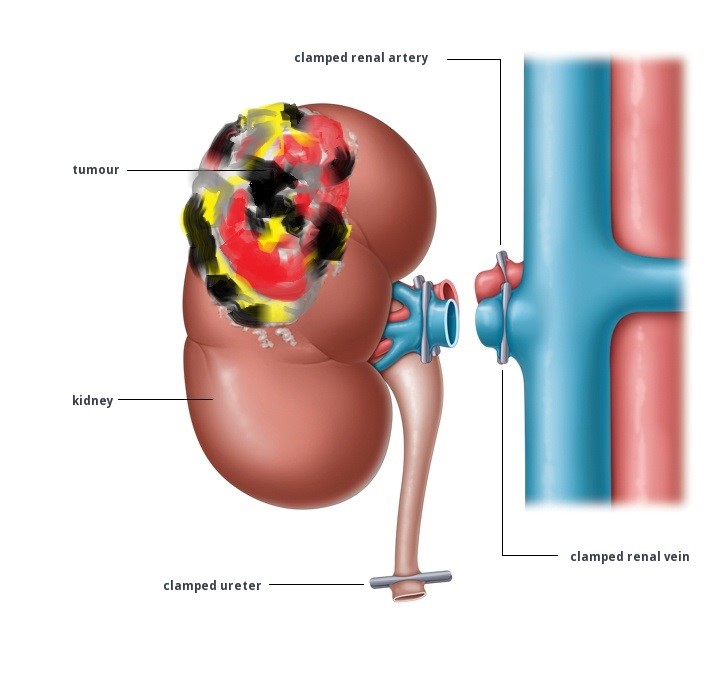
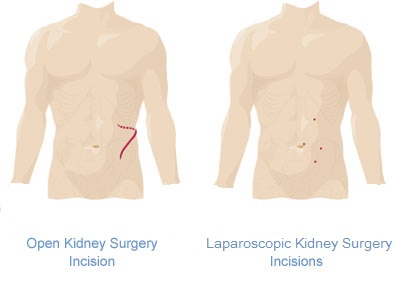
This is the removal of the whole kidney for the indication of either cancer, infection or non-function. The kidney and its surrounding fat is removed. This can be done either with open surgery or laparoscopic / robotic method, Laparoscopic / robotic method has the advantage of smaller incisions, less pain and faster recovery.
Nephrectomy surgery takes 3 to 4 hours to do. Hospital stay is 5 days on average, but shorter for laparoscopic method.
How it is done
a) Open nephrectomy
If the tumour is huge e.g. more than 10 cm, or if the tumour is small but sited near the main vessels, then open surgery is the safest way of removing the kidney. Via a loin or subcostal incision, a long incision is made and the kidney mobilized with its surrounding fat. The main vessels are ligated separately. The ureter is then ligated.
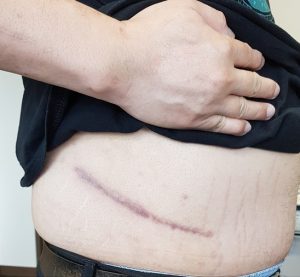
Long scar from open nephrectomy
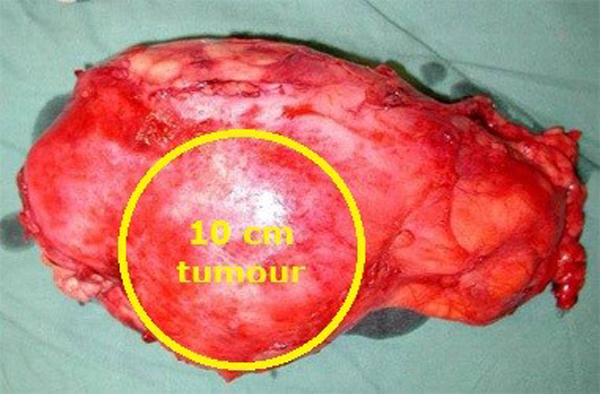
Whole kidney and tumour removed
b) Laparoscopic nephrectomy
Under general anaesthesia, the patient is positioned on the side and all pressure points padded. A small incision is made for the laparoscopic camera. The abdomen is distended with carbon dioxide gas and working instruments then inserted under direct vision. The kidney and its main blood vessels are dissected. Clips are used to individually secure the blood vessels and ureter. The kidney is then placed in a plastic bag and extracted out at the end of the surgery by extending one of the port incision.
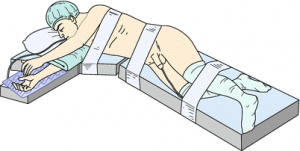
Patient position for laparoscopic nephrectomy
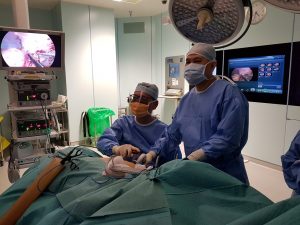
Dr Chin doing laparoscopic nephrectomy
For cancers < 4 cm, a partial nephrectomy can be done with the aim to save most of the kidney and reduce the risk of kidney failure in the latter years. This is especially relevant to patients who have co-existent diseases e.g. hypertension, diabetes mellitus. The cure rate is the same as for total nephrectomy provided the surgical margins are clear. Partial nephrectomy is a technically more demanding surgery and the complication rate is higher. As such, robotic-assisted laparoscopy is preferred over standard laparoscopy because the dexterity and superior vision of the robot enables the surgeon to do a faster repair of the kidney defect with less bleeding and lower risk of a total nephrectomy / conversion to open method. Read robotic partial nephrectomy on how this is done.
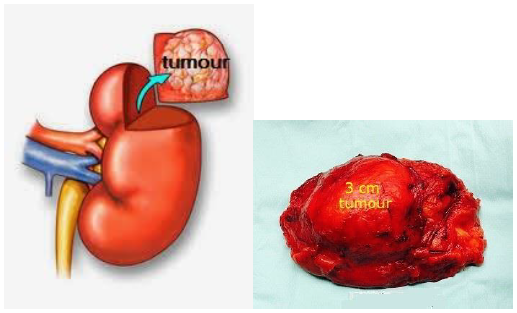
Partial nephrectomy
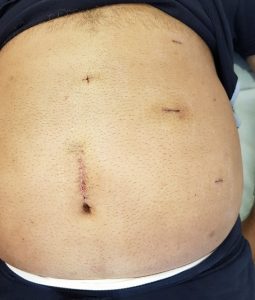
Scars after laparoscopic nephrectomy for a 6 cm cancer in the left kidney in a 92 kg man
Complications include:
- If excessive, blood transfusion is needed
- urine leak from kidney defect. This applies if a partial nephrectomy was done and if the collecting system was not properly repaired
- numbness below the wound site. This is due to cut nerves and more common with open surgery. It can take a few months to recover.
- bulge below the scar. This occurs with open surgery and is due to muscle weakness. It carries no consequence but may be of cosmetic bother
Desire outcomes:
- no excess bleeding needing blood transfusion ( 5% occurrence )
- no urine leak from kidney if a partial nephrectomy was done ( < 5% occurrence )
- no permanent numbness or bulge – this applies to open surgery ( 10% occurrence )